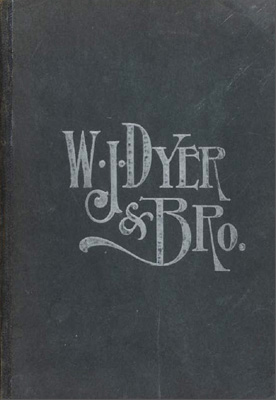
A few months ago, The Harp Guitar Foundation was able to purchase a complete 1907/1908 W. J. Dyer & Bro. catalog (thank you, donors!). Robert Carl Hartman (Bob, to his friends) and I worked out a plan for him to contribute and eventually own the original.
The seller would not share much information on the contents, save that harp guitars and harp mandolins were listed in the Index. That was good enough for us!
For anyone curious about the scope of the Dyer musical instrument firm’s operation, this is your chance. This full line catalog is the only example of its kind, now the third Dyer catalog known (the others are the 1939, which still included the Larsons’ harp guitars, and the circa 1904-1906 special harp guitar catalog).
I’ve shared the discoveries in a new full article, but first wanted to show you how my clever all-purpose graphics guy John Kong engineered and custom built a quick apparatus in order for us to affordably and safely digitize the fragile 400-page document.
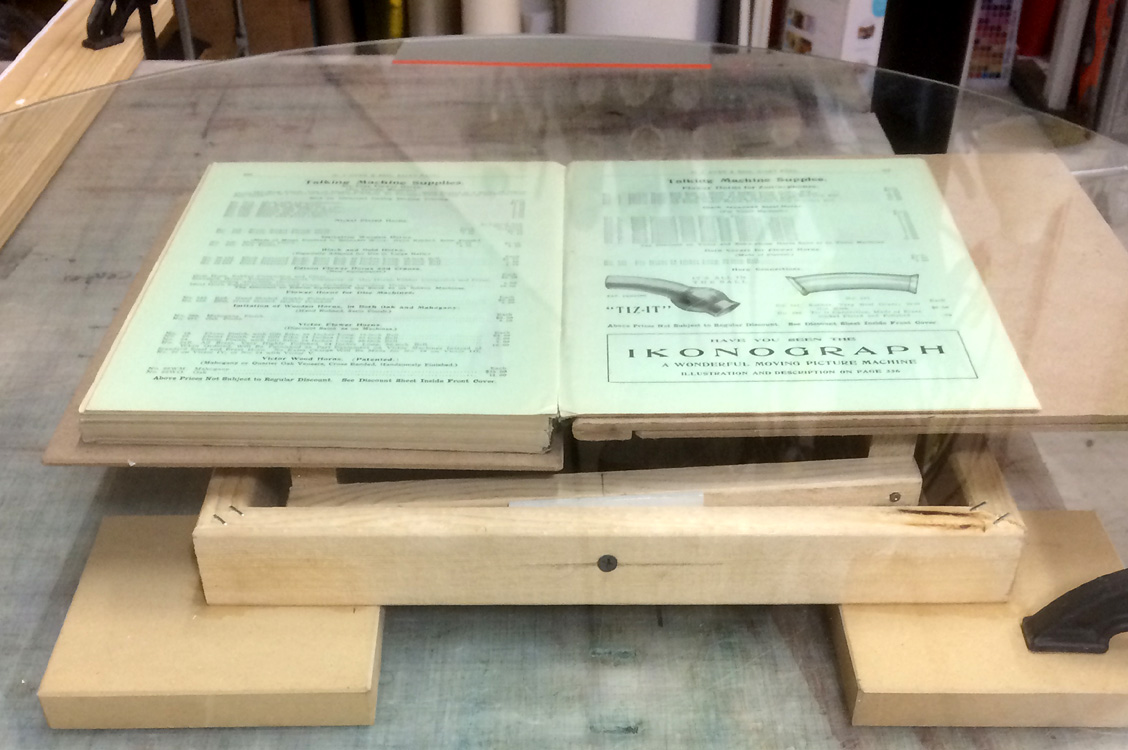
I told him I didn’t want to scan it, which would require flipping it over 200 times, but to photograph the 3/4” thick book properly, we’d still have to place each double-page spread face down against glass. The spine in that position would thus take care of itself. That’s when the common multi-joint windshield wiper gave him this idea. He whipped it up in a short afternoon. Clamped to a table, the base holds a lower rocking frame that pivots on center. Attached on each side, two support plates pivot on their centers to “self straighten” as they change height relative to each other as the bottom frame rocks. All this occurs naturally as the pages turn and the high side becomes the low side (and vice versa). A large piece of glass is then placed on top of the book to flatten each spread for focus. For the worst poorly-bound spreads that won’t flatten, he would just support the glass a bit off the surface.
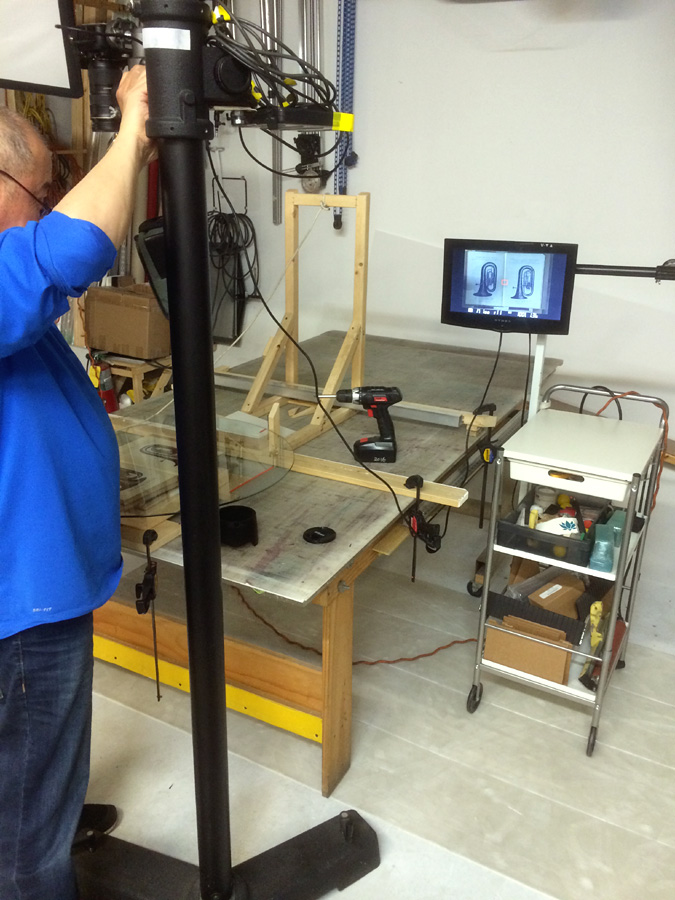
The vertical frame is simply a stop for the back of the glass and a rope to hold it up when flipping pages. John soon ignored this, as it was easier to just hold with one hand while flipping, then bringing down from the rear to “rock” the tray back flat as this allowed the 2 newly opened pages to slowly “spread” across the descending glass and safely flatten. The camera is shooting down from where his hand is and the monitor displays live and snapped images.
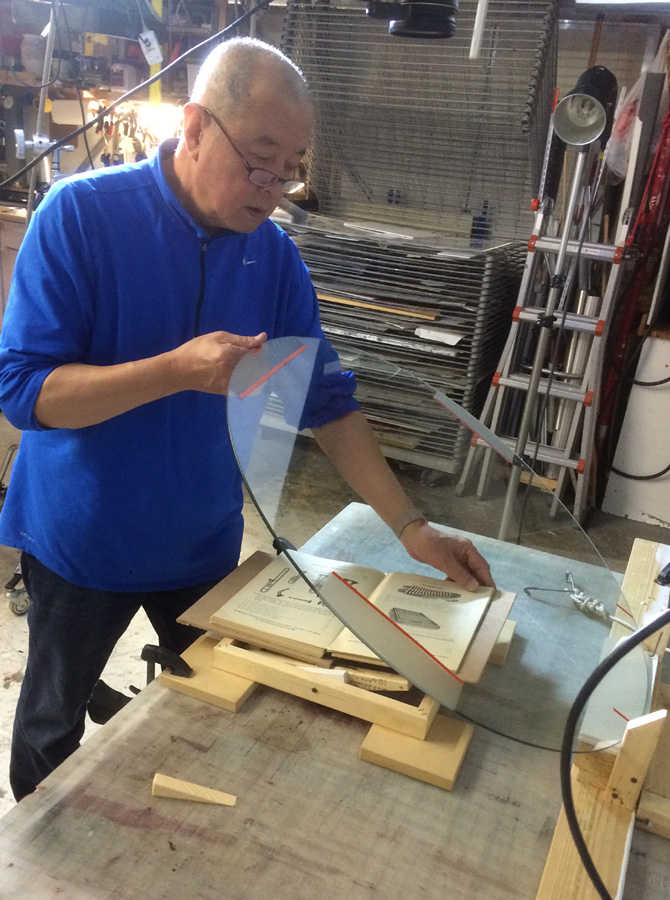
Yes, I insisted on doing the page turning, but was so skittish and klutzy that we quickly realized we’d be at this all night! – so we switched positions. I did make him wash his hands.
Once photography was complete, John quickly created an InDesign template of 400 pages with a sized window frame into which he could quickly place each page in sequence. As the pages would “walk off” when flipped, the frames allowed him to center each page reasonably consistently and quickly. We did not go as far as to rotate each perfectly (time is money), nor fix the many pages that were originally printed or bound askew. He then saved the file as PDFs in assorted resolutions. The document is available to any and all researchers who are Harpguitars.net members.
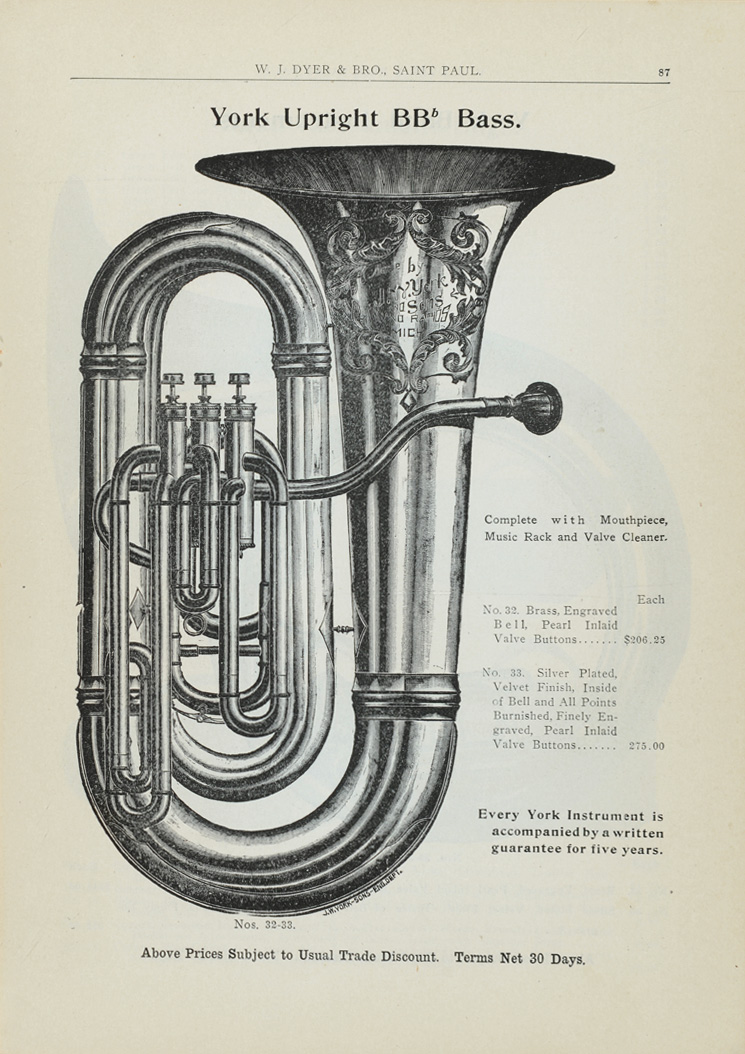 We were impressed with hundreds upon hundreds of finely engraved musical instrument images.
We were impressed with hundreds upon hundreds of finely engraved musical instrument images.
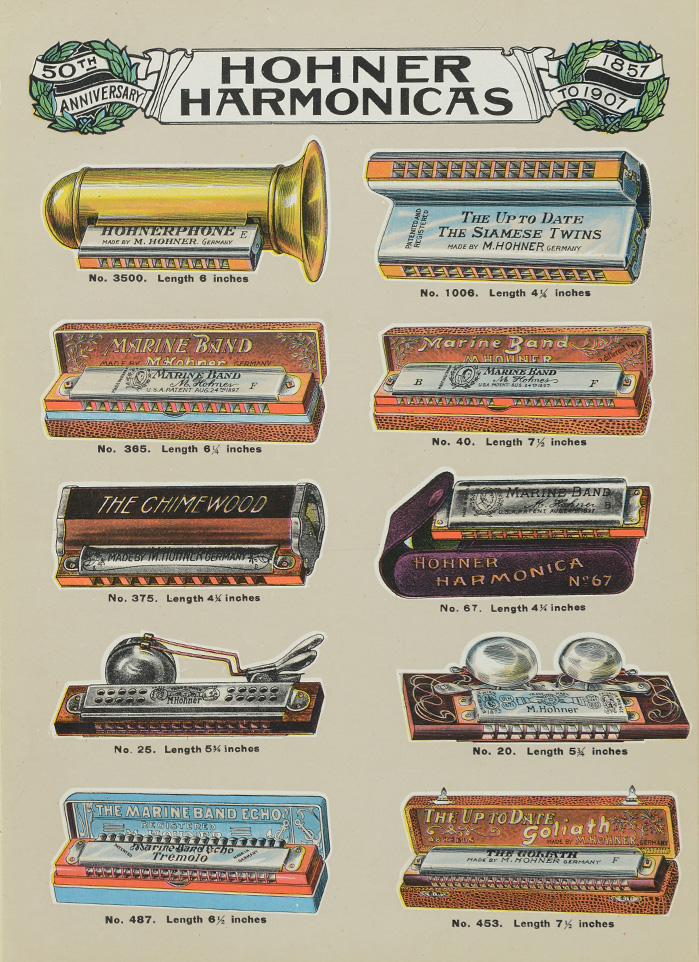 The several full color pages were especially delightful.
The several full color pages were especially delightful.
The harp guitars were essentially a duplication of the previous earlier catalog (our circa 1904-1906 dating corroborated here by notable price increases), but the pictured harp mandolins were a surprise and a delight, as they appear a full year earlier than we had previously thought.
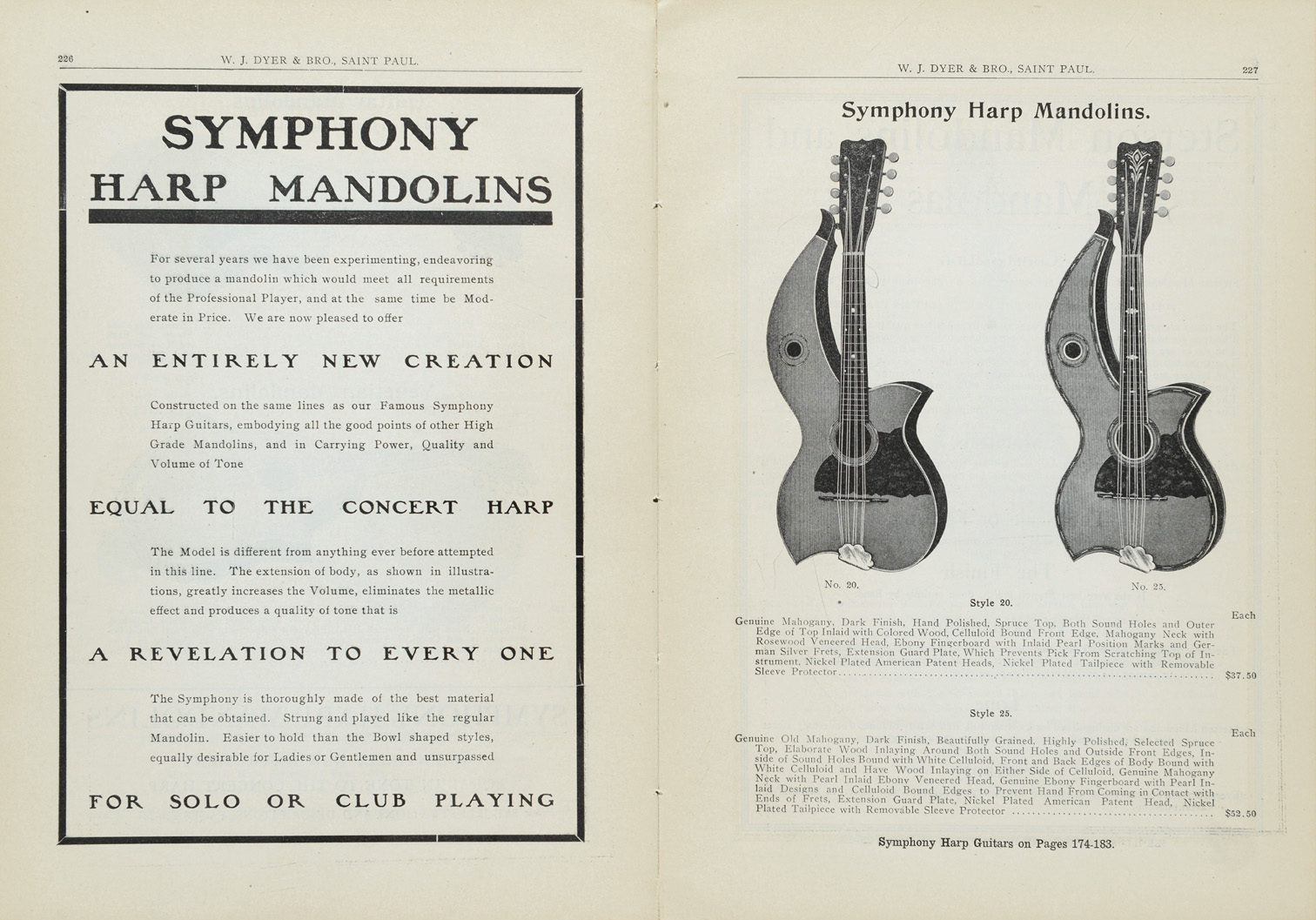
For more on the harp guitars, harp mandolins and the rare and mysterious Stetson guitars, please enjoy “W. J. Dyer & Bro. 1907/1908 Catalog.”

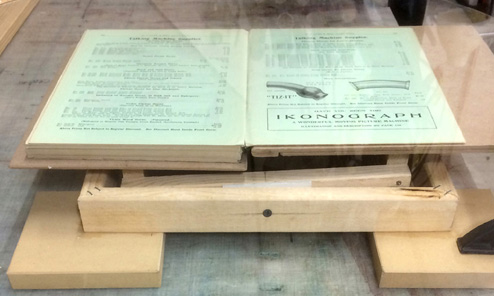
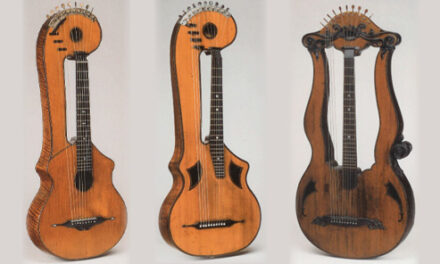
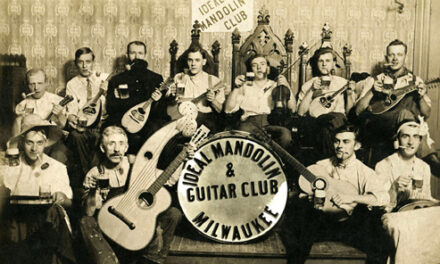
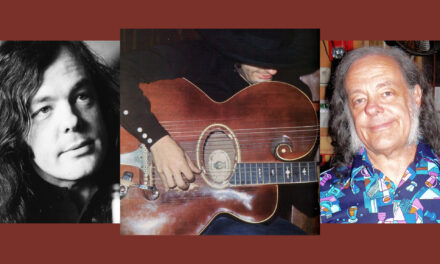
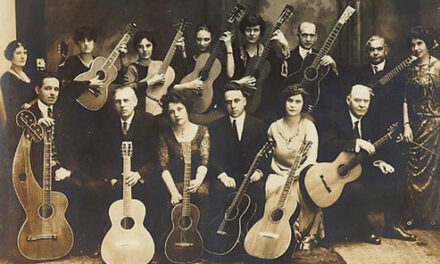
Fantastic acquisition!
I would buy framed “limited edition” prints of the harp guitar adds. Just sayin’ Thanks
Very cool idea for photographing the pages.